Image Of The Rings Of Neptune Captured By The Space Probe Voyager 2 In August 1989.
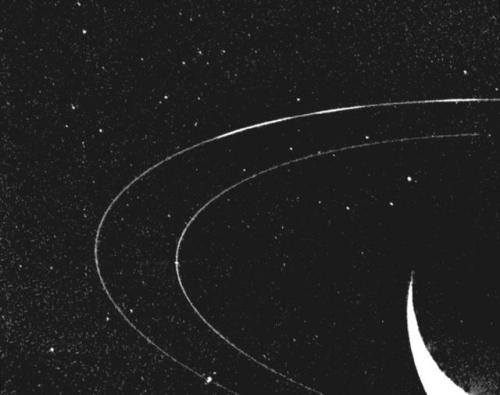
Image of the rings of Neptune captured by the space probe voyager 2 in August 1989.
Credit: NASA/JPL
More Posts from Sidusglacies and Others










Video Clip SS2935432 (Supercell Thunderstorm, timelapse)
Timelapse footage of a Supercell thunderstorm with multiple lightning flashes.
A supercell is a large rotating storm system that often produces heavy rain, hail and sometimes tornadoes. The supercell is centred on a very powerful updraft, which lifts warm, moist air to high altitude. It cools as it rises, condensing and falling as precipitation.
The base of the cloud is marked by a shelf cloud extending forwards, and a low wall cloud at the updraft/downdraft interface. This supercell was filmed in Kansas, USA, in June 2015. Such storms are most common in this region in spring and early summer.
Supercells are often put into three classification types: Classic, Low-precipitation (LP), and High-precipitation (HP). LP supercells are usually found in climates that are more arid, such as the high plains of the United States, and HP supercells are most often found in moist climates.
Supercells can occur anywhere in the world under the right pre-existing weather conditions, but they are most common in the Great Plains of the United States in an area known as Tornado Alley and in the Tornado Corridor of Argentina, Uruguay and southern Brazil.
© Roger Hill / Science Source
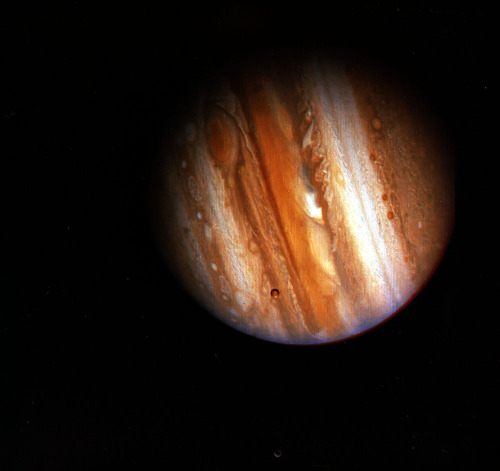
On February 5, 1979, Voyager 1 made its closest approach to Jupiter since early 1974 and 1975 when Pioneers 10 and 11 made their voyages to Jupiter and beyond.
Credit: NASA

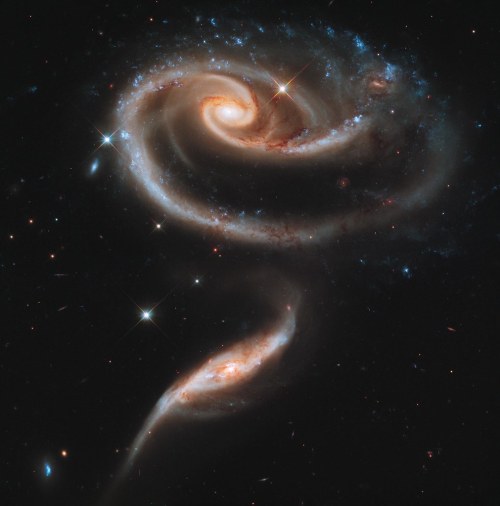
NASA’s Hubble Celebrates 21st Anniversary with “Rose” of Galaxies by NASA Goddard Photo and Video

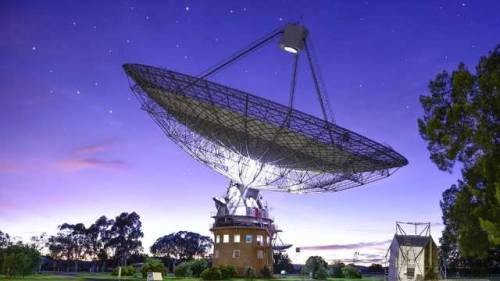
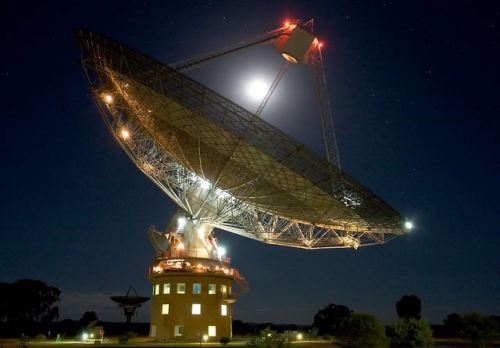


Parkes Observatory
The Parkes Observatory (also known informally as “The Dish”) is a radio telescope observatory, located 20 kilometres north of the town of Parkes, New South Wales, Australia. It was one of several radio antennae used to receive live television images of the Apollo 11 Moon landing. Its scientific contributions over the decades led the ABC to describe it as “the most successful scientific instrument ever built in Australia” after 50 years of operation.
The Parkes Observatory is run by the Commonwealth Scientific and Industrial Research Organisation (CSIRO), as part of the Australia Telescope National Facility (ATNF) network of radio telescopes. It is frequently operated together with other CSIRO radio telescopes, principally the array of six 22-metre (72 ft) dishes at the Australia Telescope Compact Array near Narrabri, and a single 22-metre (72 ft) dish at Mopra (near Coonabarabran), to form a very long baseline interferometry array. source








Space Age landscapes by planetary scientist William K. Hartmann.


☽☆☼Celestial Bodies☼☆☾
-
 seeking-for-ataraxia reblogged this · 2 months ago
seeking-for-ataraxia reblogged this · 2 months ago -
 oh-naufragio reblogged this · 2 months ago
oh-naufragio reblogged this · 2 months ago -
 i-iii-iii-vii liked this · 4 months ago
i-iii-iii-vii liked this · 4 months ago -
 cliriqstars reblogged this · 5 months ago
cliriqstars reblogged this · 5 months ago -
 messier47 reblogged this · 11 months ago
messier47 reblogged this · 11 months ago -
 nuna887 reblogged this · 1 year ago
nuna887 reblogged this · 1 year ago -
 sillysexydinomayhem280 reblogged this · 1 year ago
sillysexydinomayhem280 reblogged this · 1 year ago -
 ilosttrackofthings liked this · 1 year ago
ilosttrackofthings liked this · 1 year ago -
 gettothedancing reblogged this · 1 year ago
gettothedancing reblogged this · 1 year ago -
 ravexandxlust liked this · 1 year ago
ravexandxlust liked this · 1 year ago -
 heartt-way reblogged this · 1 year ago
heartt-way reblogged this · 1 year ago -
 spheremint4 liked this · 2 years ago
spheremint4 liked this · 2 years ago -
 hennethgalad liked this · 2 years ago
hennethgalad liked this · 2 years ago -
 wonderwafles reblogged this · 2 years ago
wonderwafles reblogged this · 2 years ago -
 surahduha reblogged this · 2 years ago
surahduha reblogged this · 2 years ago -
 neonach3 liked this · 2 years ago
neonach3 liked this · 2 years ago -
 fruitcage liked this · 2 years ago
fruitcage liked this · 2 years ago -
 anchor-ice liked this · 2 years ago
anchor-ice liked this · 2 years ago -
 movingmachine reblogged this · 2 years ago
movingmachine reblogged this · 2 years ago -
 clubcope reblogged this · 2 years ago
clubcope reblogged this · 2 years ago -
 possenrreisser reblogged this · 2 years ago
possenrreisser reblogged this · 2 years ago -
 lavdenercrayola reblogged this · 2 years ago
lavdenercrayola reblogged this · 2 years ago -
 atouchof-lavender liked this · 2 years ago
atouchof-lavender liked this · 2 years ago -
 donkerkonger reblogged this · 2 years ago
donkerkonger reblogged this · 2 years ago -
 the-ghxst-within reblogged this · 2 years ago
the-ghxst-within reblogged this · 2 years ago -
 fuhkreality reblogged this · 2 years ago
fuhkreality reblogged this · 2 years ago -
 lettersfromzephyr liked this · 2 years ago
lettersfromzephyr liked this · 2 years ago -
 rosyc liked this · 2 years ago
rosyc liked this · 2 years ago -
 al-burooj liked this · 2 years ago
al-burooj liked this · 2 years ago -
 shakazaramez reblogged this · 2 years ago
shakazaramez reblogged this · 2 years ago -
 rainingstvrs liked this · 2 years ago
rainingstvrs liked this · 2 years ago -
 soulwr1ter liked this · 2 years ago
soulwr1ter liked this · 2 years ago -
 edyss liked this · 2 years ago
edyss liked this · 2 years ago -
 aspiring-holistic-otaku reblogged this · 2 years ago
aspiring-holistic-otaku reblogged this · 2 years ago -
 aspiring-holistic-otaku liked this · 2 years ago
aspiring-holistic-otaku liked this · 2 years ago -
 muqatahi reblogged this · 2 years ago
muqatahi reblogged this · 2 years ago -
 muqatahi liked this · 2 years ago
muqatahi liked this · 2 years ago -
 cigaretteuncle liked this · 2 years ago
cigaretteuncle liked this · 2 years ago -
 possenrreisser reblogged this · 2 years ago
possenrreisser reblogged this · 2 years ago -
 possenrreisser liked this · 2 years ago
possenrreisser liked this · 2 years ago

